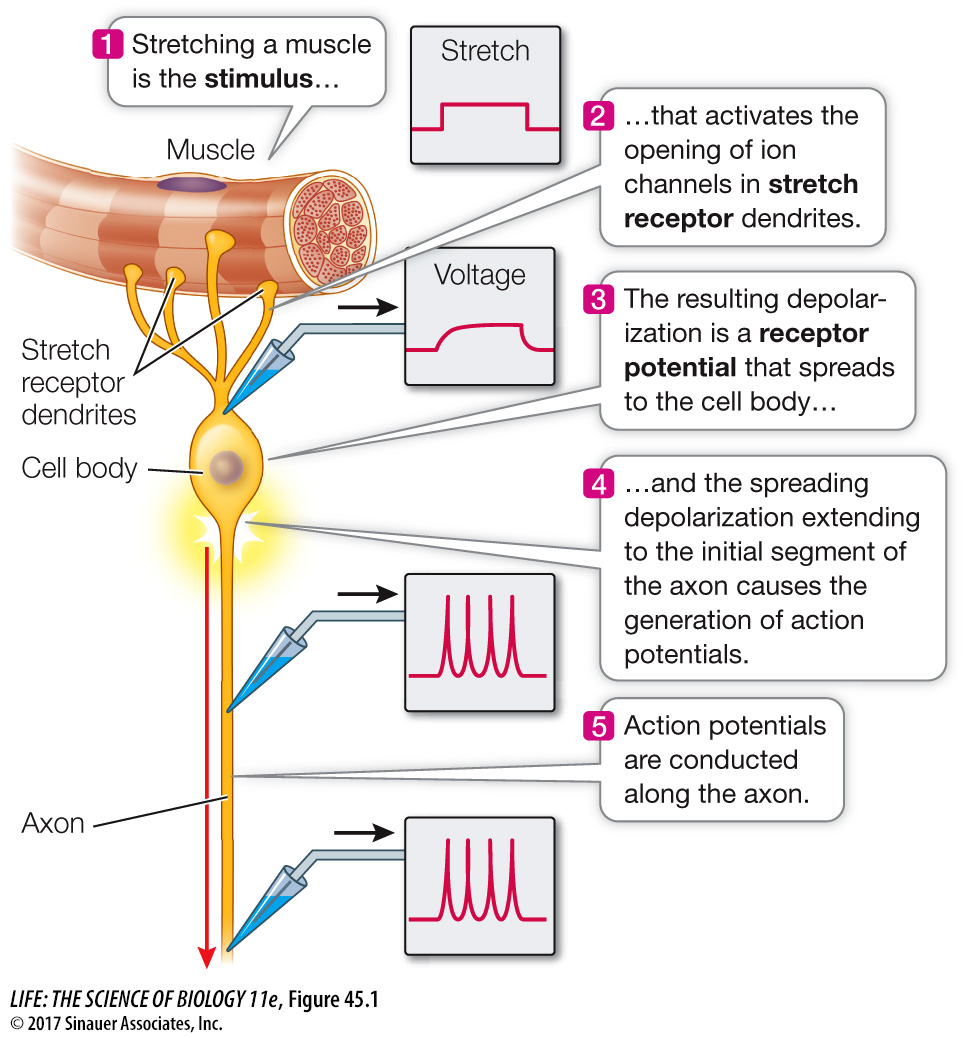Sensory transduction involves changes in membrane potentials
Sensory transduction typically begins with a receptor protein that opens or closes ion channels in response to a specific stimulus such as heat, light, chemicals, mechanical force, or electric fields. The resulting change in membrane permeability to ions alters the receptor cell’s membrane potential. A change in the membrane potential of a receptor cell in response to a stimulus is a receptor potential. Receptor potentials are graded membrane potentials that spread over only short distances. To signal over long distances in the nervous system, receptor potentials must generate action potentials, which they can do in two ways:
The receptor potential may trigger action potentials in the receptor cell itself.
The receptor potential may cause the receptor cell to release neurotransmitters that induce a postsynaptic neuron to generate action potentials.
A good model of how a receptor cell generates action potentials is the stretch receptor of a crayfish (Figure 45.1). Stretching the muscle to which the stretch receptor is attached causes receptor potentials. These receptor potentials spread to the base of the cell’s axon, where they generate action potentials that travel down the axon to the CNS. The rate at which action potentials are fired depends on the magnitude of the receptor potential; that magnitude, in turn, depends on how much the muscle is stretched.

In a receptor cell that does not fire action potentials (such as the photoreceptors in the vertebrate eye), the spreading receptor potential reaches a presynaptic patch of cell membrane and induces the release of a neurotransmitter. The intensity of the stimulus influences how much neurotransmitter is released. That neurotransmitter binds to receptor proteins on an associated sensory neuron, altering its membrane potential and causing it to increase or decrease its rate of firing action potentials. In a few cases, this second cell also does not generate action potentials, but simply changes the rate at which it releases neurotransmitter onto another neuron. Eventually, however, the stimulation of a sensory cell is always coded as a change in firing of action potentials in a sensory circuit.